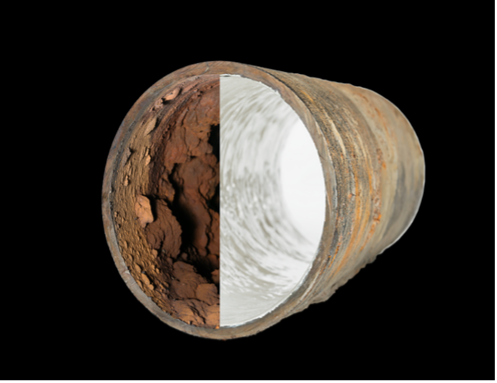Repairing a damaged sewer pipe was difficult until the past two decades. Initially, diagnosing the problem was easy enough, but when it came time to repair the sewer line, it would be a huge excavation project that could cause irreparable damage to yards’ thoughtful landscaping. We didn’t know how to fix underground pipes without digging them out.
There are a few methods for pipe repair today that aren’t too invasive. Two of these methods require only digging up a small plot and a hole to allow access to underground pipe repair methods. This is what we call “trenchless pipe repairs” because it doesn’t require digging a trench to access the pipe.
Two main methods for trenchless pipe repair are Cured-in place pipes (CIPP) and pipe bursting. The first relines the pipe while the second replaces it completely with a new one. Both are options for sewer pipe repair. In this blog post we’ll discuss when one might be better.
Pipe Bursting explained
Imagine pushing a pencil through a thinner straw. The straw, even though it is too small for the pencil, will eventually give and break as the pencil pushes through. This is basically what happens in a pipe burst operation.
Pipe bursting is when a larger, pointed-end pipe is pulled through the existing sewer line. The pipe’s size and power will determine how large the new pipe is. It will “burst” the old pipe and leave the new one. This is a great way to replace an old pipe.
The CIPP Relining Process Explained
CIPP relining on the other hand repairs your pipe and does not replace it. This method uses an epoxy-coated liner to repair the pipe. It works in a similar way as pipe burst. This liner is designed to fit inside your pipe, not destroy it. Once everything is in place, the liner expands to adhere to the walls of your old pipe. It seals cracks and holes with precision.
Which is better for your needs?
It’s difficult to say which system is best, as they each serve different purposes. For expert advice, it is best to call your local sewer pipe repair specialists.
We would be remiss if not to name at least a few. Pipe burst is not a good choice for yards with delicate landscaping. Because you are pulling a larger pipe through the ground and replacing an old one, pipe bursting can be a bit more disruptive and abrasive. Although it is unlikely to cause permanent damage, this can create slight terrain inconsistencies. The professional who repairs sewer pipes can determine the potential impact on your yard by bursting a pipe.
The CIPP method works best for pipes that have not suffered severe damage. CIPP is most effective when the pipe can be maintained in its shape. However, significant differences in the size of pipes can cause problems. It could lead to problems if the pipe is damaged or has large holes.
Want a professional diagnosis? We have served many clients in the Northern Twin Cities, and would be delighted to assist you with your sewer pipe repair. Get in touch with us today!

